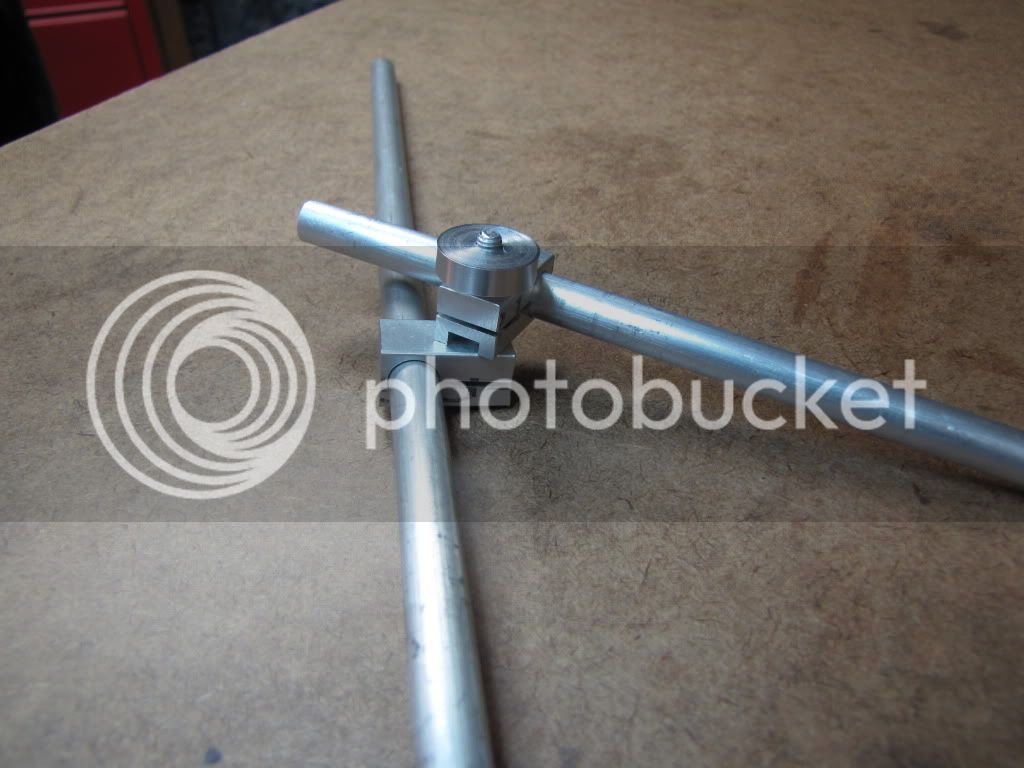zeeprogrammer said:
Not sure I follow. The idea was to tram the mill. I had an idea but also some questions. The idea was to have the spindle at top of Z (is that home?)...table at center X. Then use tool to set indicator to one extreme X of table. Rotate to other extreme of table. Tram as required.
So for this what is needed? and for this it is assumed that the spindle will bring the tool to the work.
Spindle attachment
Cross Bar
Indicator Holder
Spindle Attachment: depends upon the capacity of the spindle itself, want it to easily attach and stout enough to support the cross bar.
Possibles: A 1/2 dia inch piece of round sturdy steel stock length but lets say 3 inches long. Yours is an X2 variant so were not dealing with monster mills here.
Cross Bar: Given requirement to be able to sweep the tables extremes its max length to be determined by table width divided by two. The longer this piece becomes the more the requirement for robustness becomes.
Question: is the requirement for full table width sweep necessary, would not the half way point from center out serve as well? I.e. 18 inch wide table condition using a 9 inch cross bar, why not use a 4 1/2 inch bar. It is understood that the farther out the sweep is the greater the accuracy upon results, but the shorter bar will still return results better than the accuracy of the machine of topic
Cross bar needs to attach to spindle piece, again this connection point should be simple and secure.
Cross bar needs to be of such size to resist movement
Cross bar needs some method for indicator to attach
Indicator Holder Determined by indicator mount itself, round shaft type or dovetail type. Ease of attachment, firm grip without marring the indicator itself also needs to be considered.
Perhaps more but it is not really that complicated. Dont always catch all the words that fly out at a hundred miles an hour from mental pictures

Workings of a scatter brain, however you have any new design ideas?
You've re looked over the types in this thread, from simple to not so simple. Given the material you have and the new found lessons give us a sketch.
Genius is the simple solution to a complicated problem, bring the genius out

You had mentioned some possible variability in X as the head went up/down. I have no idea what to do about that given the mill I have. Other than to adjust as best I can the Z gib.
There is a way, I cant explain it, it is simple, it is not putting a piece of round stock in the spindle and running it up and down against an indicator, its like the other way around.
So far 1 for 1. I'm pretty happy with the stop and what I learned. This 'tramming' tool...as simple as it may be, is turning out to be a pretty good learning thread.
Should be happy, you learned about levers, such a simple concept older than the hills yet effects virtually every thing mechanical
So far we've generated some 4 methods to do this. Joe's (the last post here) is another. Thanks Joe! (And I'll pass on the spinach.) Any idea why such notion isn't used on magnetic base indicator holders? Cost? Harder to produce? Or is it used on more quality equipment?
Thanks.
Cost
Awaiting your new design
Robert










